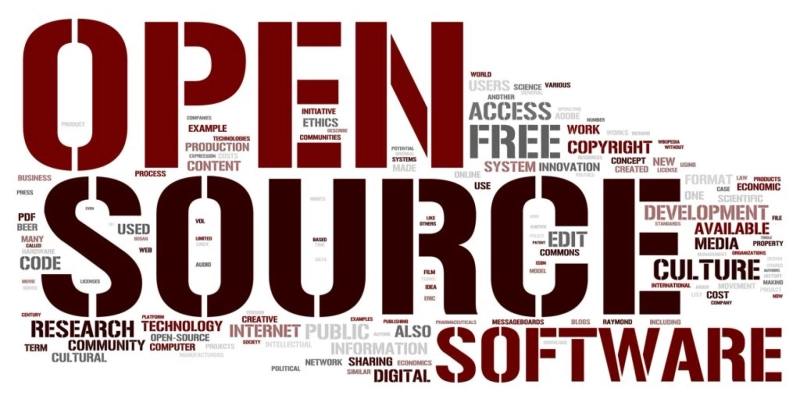Open source software has revolutionized the digital landscape by fostering innovation and collaboration across various industries. Unlike proprietary software, which restricts access to its source code, open source software (OSS) is freely available for anyone to use, modify, and distribute. This openness has not only accelerated technological advancements but also nurtured a global community of developers and users working together towards common goals. This article explores how open source is transforming digital innovation and collaboration, highlighting its impact on technology, business, and society.
1. Accelerating Technological Advancements
Open source has become a cornerstone of technological progress. By allowing developers to access and modify the source code, OSS projects benefit from diverse contributions and rapid iteration. This collaborative environment accelerates innovation, as developers from around the world can contribute ideas, fix bugs, and enhance features.
Key Examples:
Linux Operating System: Linux, a leading open source operating system, powers a significant portion of the world's servers, supercomputers, and mobile devices. Its development is driven by contributions from thousands of developers, resulting in continuous improvements and adaptations to emerging technologies.
Apache Hadoop: Hadoop, an open source framework for distributed storage and processing of large data sets, has become essential in big data analytics. Its open nature has led to widespread adoption and innovation in data management and analysis.
2. Fostering Collaborative Development
Open source projects thrive on collaboration. Developers and organizations contribute to projects, share knowledge, and build upon each other's work. This collaborative model fosters a sense of community and collective problem-solving, leading to more robust and reliable software.
Key Examples:
GitHub: GitHub, a platform for version control and collaborative coding, has become the hub for open source projects. It allows developers to work together on projects, track changes, and manage contributions efficiently.
Mozilla Firefox: Mozilla Firefox, an open source web browser, benefits from contributions from a global community of developers. This collaborative approach has led to the development of a highly customizable and secure browser.
3. Driving Innovation in Various Sectors
Open source is not limited to software development; it has impacted various sectors by encouraging innovation and reducing costs. From healthcare to education, OSS projects are making a difference by providing accessible and customizable solutions.
Key Examples:
OpenMRS: OpenMRS, an open source medical record system, is used in numerous healthcare settings worldwide. Its flexibility and adaptability have made it a valuable tool for managing patient information in low-resource environments.
Khan Academy: Khan Academy, an educational platform, leverages open source technologies to provide free and interactive learning resources. Its open approach has enabled educators and developers to contribute and enhance the platform.
4. Lowering Costs and Reducing Barriers
One of the significant advantages of open source is its potential to reduce costs and lower barriers to entry. Organizations can leverage open source software without incurring licensing fees, allowing them to allocate resources to other areas of development.
Key Examples:
WordPress: WordPress, an open source content management system, powers a substantial portion of websites on the internet. Its free availability and extensive plugin ecosystem make it an accessible platform for individuals and businesses to create and manage websites.
GIMP: GIMP (GNU Image Manipulation Program) is an open source alternative to expensive graphic design software. It provides powerful image editing capabilities without the high costs associated with proprietary software.
5. Promoting Transparency and Security
Open source software promotes transparency and security by allowing anyone to inspect the code for vulnerabilities and malicious elements. This openness encourages continuous scrutiny and improvements, leading to more secure and trustworthy software.
Key Examples:
OpenSSL: OpenSSL, an open source toolkit for secure communication, is widely used in internet security protocols. Its open nature has facilitated the identification and resolution of security vulnerabilities, enhancing overall security.
Signal: Signal, an open source messaging app, is known for its strong encryption and privacy features. Its transparency ensures that the security measures can be independently verified and trusted by users.
6. Building a Global Community
Open source projects bring together a diverse community of developers, users, and organizations. This global collaboration fosters knowledge sharing, mentorship, and the exchange of ideas, enriching the development process and broadening the impact of projects.
Key Examples:
Debian: Debian, a popular Linux distribution, is maintained by a global team of volunteers. The project's diverse contributors ensure that the distribution meets the needs of users from different regions and backgrounds.
Stack Overflow: Stack Overflow, a Q&A platform for developers, benefits from contributions from a worldwide community. The open exchange of knowledge and solutions helps developers solve problems and advance their skills.
Conclusion
Open source software has fundamentally transformed digital innovation and collaboration. By promoting openness, collaboration, and transparency, OSS has accelerated technological advancements, reduced costs, and fostered a global community of contributors. As the digital landscape continues to evolve, the principles of open source will likely remain a driving force behind innovation and collective progress.
Embracing open source not only empowers individuals and organizations to contribute to meaningful projects but also ensures that technology serves as a catalyst for positive change. As more industries and sectors adopt open source practices, we can expect continued growth in innovation and collaboration, shaping a more connected and dynamic digital future.


